
How to Use L298N DC motor driver: Examples, Pinouts, and Specs
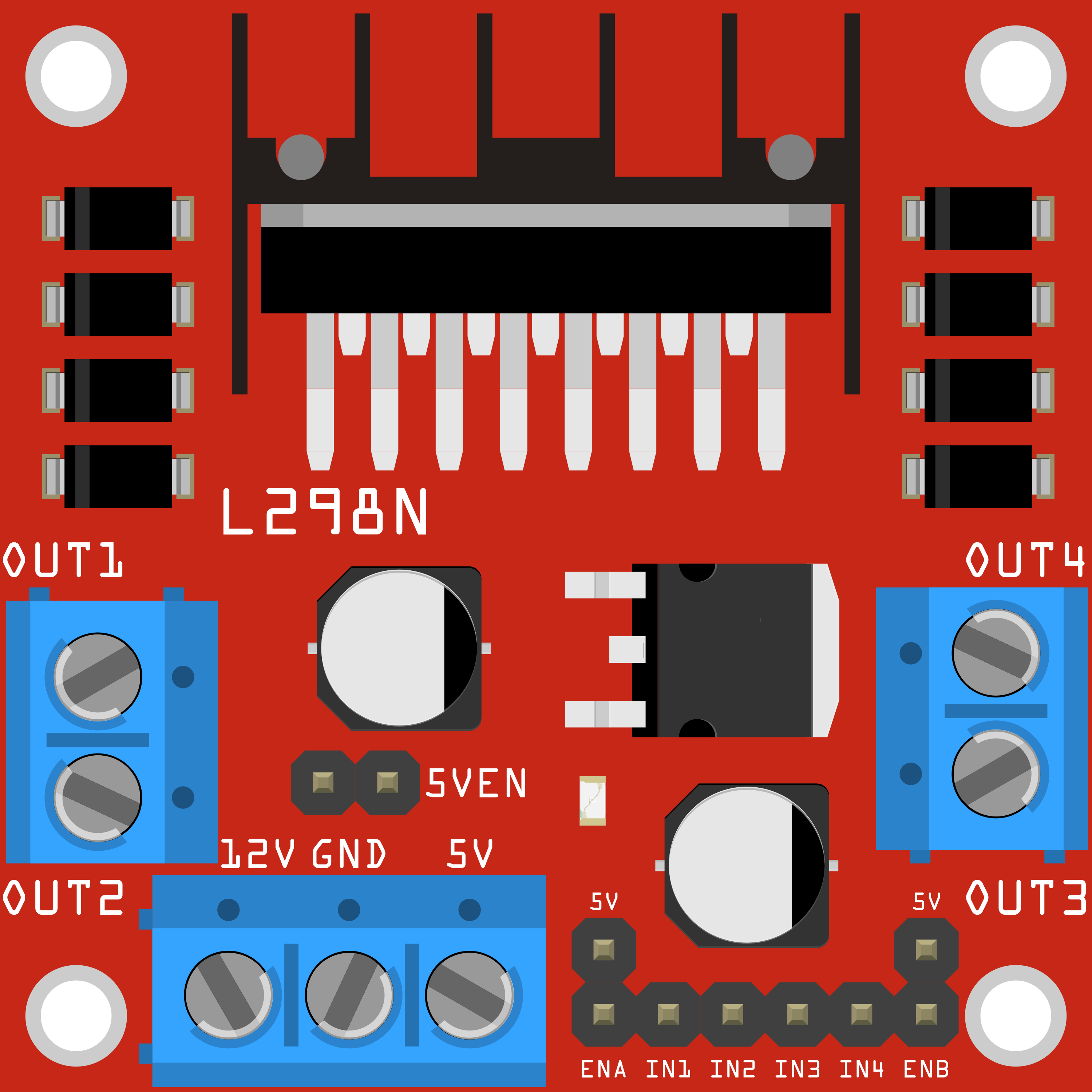
 Design with L298N DC motor driver in Cirkit Designer
Design with L298N DC motor driver in Cirkit DesignerIntroduction
The L298N is a dual H-bridge motor driver that enables control of the direction and speed of DC motors using Pulse Width Modulation (PWM) signals. It is capable of driving two DC motors simultaneously, making it a versatile and widely used component in robotics, automation, and motor control projects. The L298N is designed to handle motors with operating voltages between 5V and 35V and can deliver up to 2A of current per channel.
Explore Projects Built with L298N DC motor driver
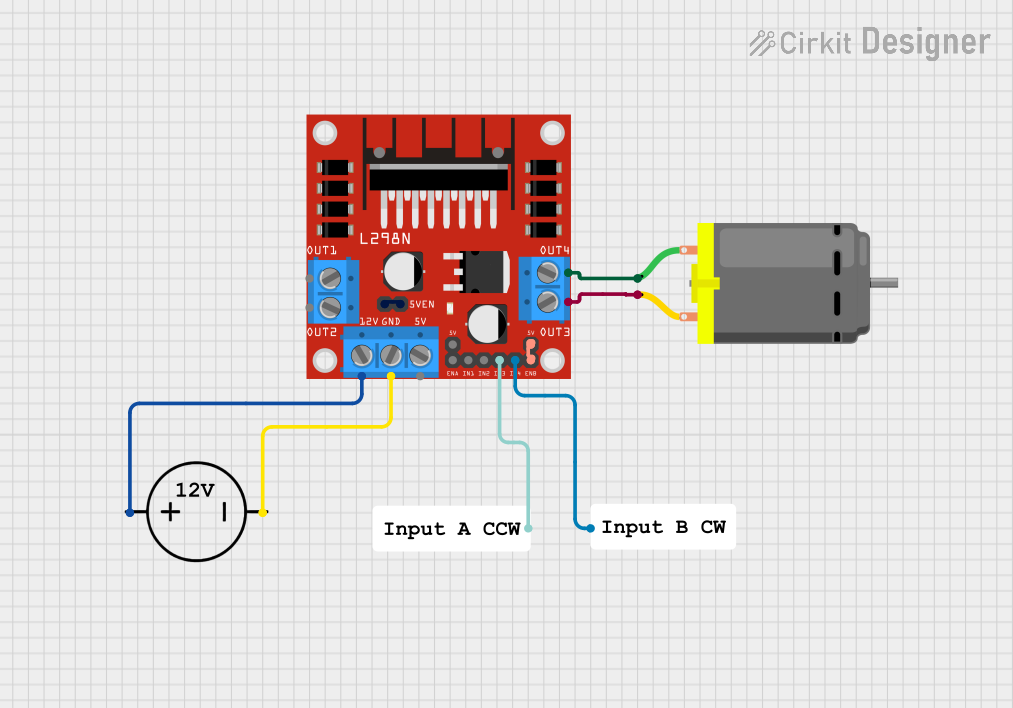
 Open Project in Cirkit Designer
Open Project in Cirkit Designer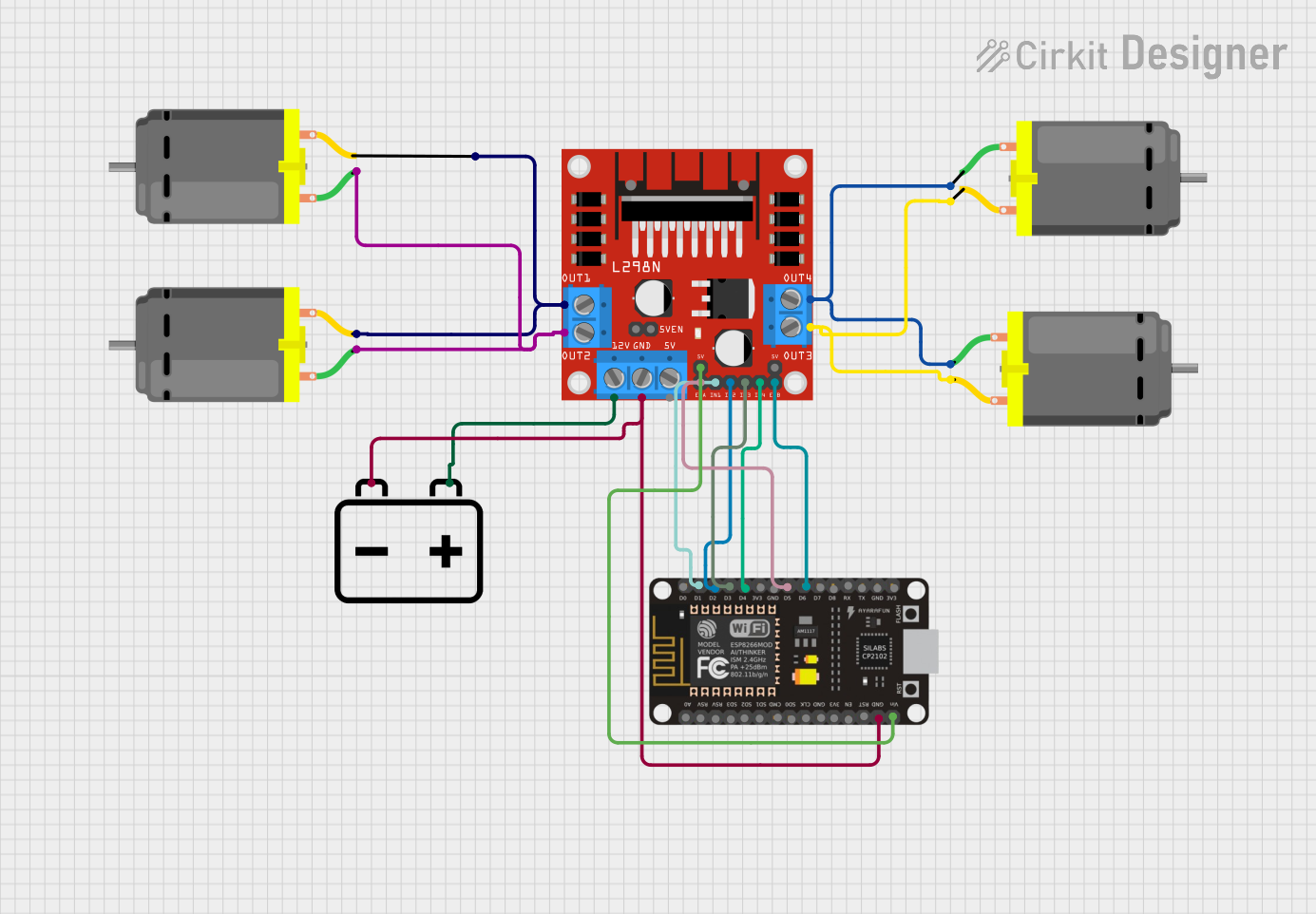
 Open Project in Cirkit Designer
Open Project in Cirkit Designer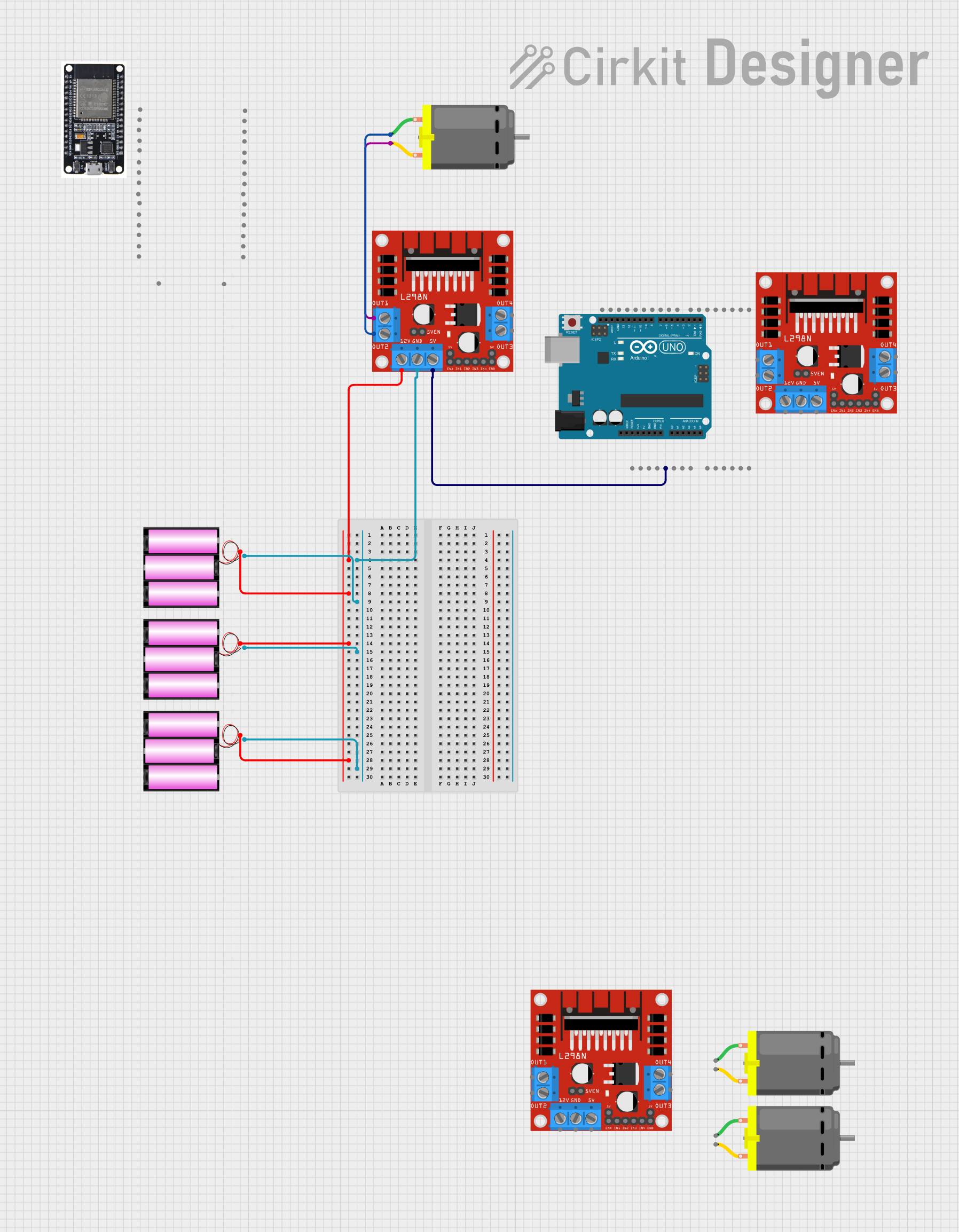
 Open Project in Cirkit Designer
Open Project in Cirkit Designer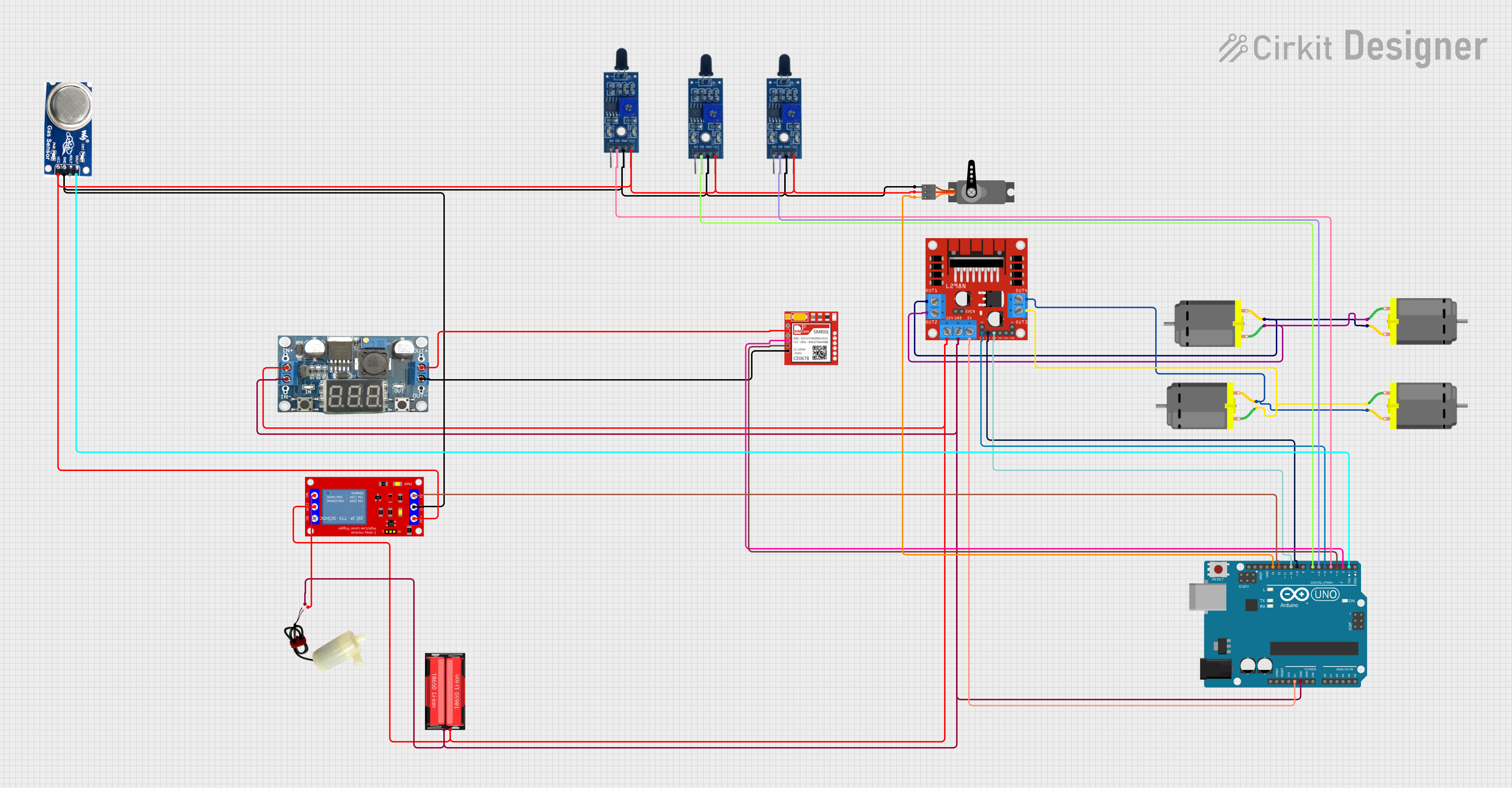
 Open Project in Cirkit Designer
Open Project in Cirkit DesignerExplore Projects Built with L298N DC motor driver

 Open Project in Cirkit Designer
Open Project in Cirkit Designer
 Open Project in Cirkit Designer
Open Project in Cirkit Designer
 Open Project in Cirkit Designer
Open Project in Cirkit Designer
 Open Project in Cirkit Designer
Open Project in Cirkit DesignerCommon Applications and Use Cases
- Robotics: Controlling the movement of robot wheels or arms.
- Automation: Driving conveyor belts or automated systems.
- DIY Projects: Building remote-controlled cars, drones, or other motorized devices.
- Educational Projects: Learning about motor control and H-bridge circuits.
Technical Specifications
Key Technical Details
- Operating Voltage (Logic): 5V
- Motor Supply Voltage (Vmotor): 5V to 35V
- Maximum Output Current (Per Channel): 2A
- Logic Current: 0mA to 36mA
- Control Method: PWM for speed control, logic HIGH/LOW for direction control
- Number of Channels: 2 (dual H-bridge)
- Built-in Protection: Thermal shutdown and overcurrent protection
- Dimensions: Approximately 43mm x 43mm x 27mm
Pin Configuration and Descriptions
The L298N module has several pins and terminals for motor control and power input. Below is a detailed description:
Power and Motor Terminals
| Pin/Terminal | Description |
|---|---|
VCC |
Motor power supply (5V to 35V). Connect to the motor's power source. |
GND |
Ground connection. Common ground for logic and motor power. |
5V |
Logic power supply (5V). Can also be used as a 5V output if VCC > 7V. |
OUT1 |
Output for Motor 1 (connect to one terminal of Motor 1). |
OUT2 |
Output for Motor 1 (connect to the other terminal of Motor 1). |
OUT3 |
Output for Motor 2 (connect to one terminal of Motor 2). |
OUT4 |
Output for Motor 2 (connect to the other terminal of Motor 2). |
Control Pins
| Pin | Description |
|---|---|
ENA |
Enable pin for Motor 1. Use PWM signal to control speed. |
ENB |
Enable pin for Motor 2. Use PWM signal to control speed. |
IN1 |
Input pin for Motor 1. Logic HIGH/LOW controls direction. |
IN2 |
Input pin for Motor 1. Logic HIGH/LOW controls direction. |
IN3 |
Input pin for Motor 2. Logic HIGH/LOW controls direction. |
IN4 |
Input pin for Motor 2. Logic HIGH/LOW controls direction. |
Usage Instructions
How to Use the L298N in a Circuit
Power Connections:
- Connect the motor power supply to the
VCCterminal (5V to 35V). - Connect the ground of the power supply to the
GNDterminal. - If the motor power supply is greater than 7V, the
5Vpin can be used as a 5V output to power external logic circuits.
- Connect the motor power supply to the
Motor Connections:
- Connect the terminals of Motor 1 to
OUT1andOUT2. - Connect the terminals of Motor 2 to
OUT3andOUT4.
- Connect the terminals of Motor 1 to
Control Connections:
- Connect the
ENAandENBpins to PWM-capable pins on your microcontroller to control motor speed. - Connect
IN1,IN2,IN3, andIN4to digital pins on your microcontroller to control motor direction.
- Connect the
Logic Power:
- If your microcontroller operates at 5V, connect its 5V output to the
5Vpin on the L298N module.
- If your microcontroller operates at 5V, connect its 5V output to the
Important Considerations and Best Practices
- Ensure the motor power supply voltage matches the motor's operating voltage.
- Use a heat sink or cooling fan if driving motors at high currents for extended periods.
- Avoid exceeding the maximum current rating of 2A per channel to prevent damage.
- Use appropriate decoupling capacitors on the power supply to reduce noise.
Example: Connecting to an Arduino UNO
Below is an example of how to control two DC motors using the L298N and an Arduino UNO:
Circuit Connections
ENA→ Arduino Pin 9 (PWM)ENB→ Arduino Pin 10 (PWM)IN1→ Arduino Pin 7IN2→ Arduino Pin 6IN3→ Arduino Pin 5IN4→ Arduino Pin 4VCC→ External Motor Power Supply (e.g., 12V)GND→ Common Ground (Arduino and Motor Power Supply)
Arduino Code
// Define control pins for Motor 1
#define ENA 9 // PWM pin for speed control
#define IN1 7 // Direction control pin
#define IN2 6 // Direction control pin
// Define control pins for Motor 2
#define ENB 10 // PWM pin for speed control
#define IN3 5 // Direction control pin
#define IN4 4 // Direction control pin
void setup() {
// Set motor control pins as outputs
pinMode(ENA, OUTPUT);
pinMode(IN1, OUTPUT);
pinMode(IN2, OUTPUT);
pinMode(ENB, OUTPUT);
pinMode(IN3, OUTPUT);
pinMode(IN4, OUTPUT);
}
void loop() {
// Motor 1: Forward at 50% speed
analogWrite(ENA, 128); // Set speed (0-255)
digitalWrite(IN1, HIGH);
digitalWrite(IN2, LOW);
// Motor 2: Backward at 75% speed
analogWrite(ENB, 192); // Set speed (0-255)
digitalWrite(IN3, LOW);
digitalWrite(IN4, HIGH);
delay(2000); // Run motors for 2 seconds
// Stop both motors
analogWrite(ENA, 0);
analogWrite(ENB, 0);
delay(2000); // Wait for 2 seconds
}
Troubleshooting and FAQs
Common Issues and Solutions
Motors Not Running:
- Ensure the motor power supply is connected and providing sufficient voltage.
- Verify that the
ENAandENBpins are receiving PWM signals. - Check the wiring of the motor terminals (
OUT1,OUT2,OUT3,OUT4).
Motors Running in the Wrong Direction:
- Swap the connections of
IN1andIN2(orIN3andIN4) to reverse the motor direction. - Verify the logic levels being sent to the direction control pins.
- Swap the connections of
Overheating:
- Use a heat sink or cooling fan to dissipate heat.
- Reduce the motor load or operating current.
No 5V Output:
- Ensure the motor power supply voltage is greater than 7V for the onboard 5V regulator to function.
FAQs
Can the L298N drive stepper motors? Yes, the L298N can drive stepper motors by controlling the sequence of the H-bridge outputs.
What is the maximum motor current the L298N can handle? The L298N can handle up to 2A per channel, but a heat sink is recommended for high currents.
Can I use the L298N with a 3.3V microcontroller? The L298N is designed for 5V logic. Use a level shifter or ensure the control signals are compatible.